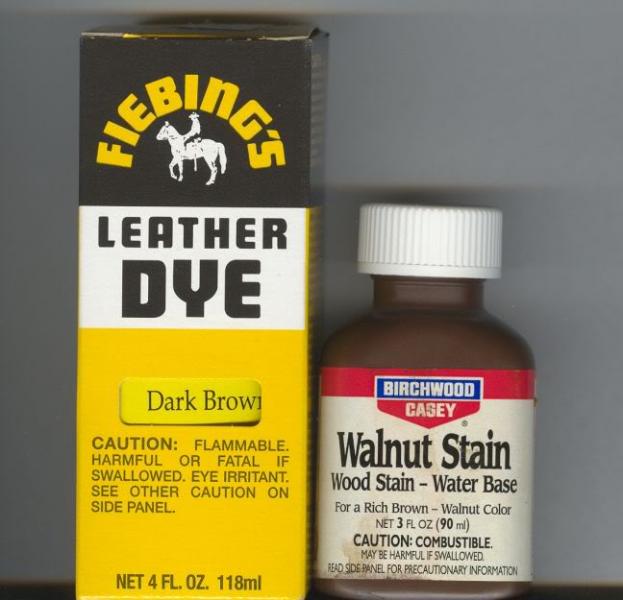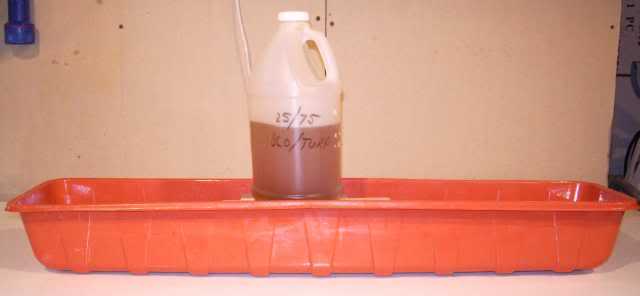-
Legacy Member

Horton Surname Origin
(Locality). A town in Yorkshire England --the horrible town, or the town in the ravine, from Horr, a ravine.
--the horrible town, or the town in the ravine, from Horr, a ravine.
-
-
06-24-2009 12:54 AM
# ADS
Friends and Sponsors

-
Back on topics kids, puh-leeeze. I want to learn stuff, my head is still too empty for my taste.
Wait, what was the topic of this thread again?
-
-
-
FREE MEMBER
NO Posting or PM's Allowed

...er, sniffing too much blow, oops, what a typo, BLO ...
...
hey, no problem with the thread growing to other subjects, I bypass any heated parts and get to digest the facts on a new subject, no problem...to be honest I really didn't understand about oil in a chamber until now, so for me this is a win.
-
Banned

-
Legacy Member

This is a little late, but if you want real, pure, unadulterated tung oil, it's available from The Real Milk Paint Company, Quakertown, PA, tel. (215)538-5435 (Environmentally Friendly Paint - Real Milk Paint ®). A 16 oz. plastic bottle of "dark raw tung oil" cost me $10.25 plus shipping about 6 months ago and will probably last me the rest of my life. Both smaller & larger sizes are available from this source. Hope this helps.
Donzi
-
-
Legacy Member

Oops!! Guess I should have read the earlier pages of this string before posting. Anyway, they're a good outfit to do business with.
Donzi
-
-
FREE MEMBER
NO Posting or PM's Allowed

It might seem a bit anorak. But I got expert advice from an old stock maker who worked for Krieghof. After sanding with 600 grit and steel wool, the stocks were treated with pure linseed oil and then rubbed by hand, using pure, unadulterated linseed oil
and then rubbed by hand, using pure, unadulterated linseed oil and pumice dust for hours on end until the suface was so smooth that it appeared to be shiny but was in fact opaque.
and pumice dust for hours on end until the suface was so smooth that it appeared to be shiny but was in fact opaque.
-
That's basically what we did as apprentices Villiers, got the stock, complete with our poatches etc to as perfect a finish as we could then it went into a warm linseed oil tank for a few hours (while we started yet ANOTHER...) After a few hours, it drained and then we went to work on the linseed, boning it into the wood with another piece of hardwood. Until eventually, the linseed gave out a deep sheen. No ridges from the scraper or lines from sandpaper were allowed. Everything was perfectly smooth. Nothing but linseed oil
tank for a few hours (while we started yet ANOTHER...) After a few hours, it drained and then we went to work on the linseed, boning it into the wood with another piece of hardwood. Until eventually, the linseed gave out a deep sheen. No ridges from the scraper or lines from sandpaper were allowed. Everything was perfectly smooth. Nothing but linseed oil was permitted. And when you saw what was achieved by our apprentice examples, you wonder why anyone would use varnish!
was permitted. And when you saw what was achieved by our apprentice examples, you wonder why anyone would use varnish!
-
-
FREE MEMBER
NO Posting or PM's Allowed

That's basically what we did as apprentices Villiers, got the stock, complete with our poatches etc to as perfect a finish as we could then it went into a warm
linseed oil
tank for a few hours (while we started yet ANOTHER...) After a few hours, it drained and then we went to work on the linseed, boning it into the wood with another piece of hardwood. Until eventually, the linseed gave out a deep sheen. No ridges from the scraper or lines from sandpaper were allowed. Everything was perfectly smooth. Nothing but
linseed oil
was permitted. And when you saw what was achieved by our apprentice examples, you wonder why anyone would use varnish!
Well, I´ve just done mine ... and the reason why it´s not done any more is
.
.
.
slave labour is now prohibited.
(But the result was worth it. Reminds me of a cricket bat.
-
Advisory Panel


Tung oil

Originally Posted by
Edward Horton

...I applied Behr Tung oil to a stock because it was recommended by a very knowledgeable person only to find out later the contents of the product had changed and it was now had 50%
linseed oil
and was a wiping varnish. Behr Tung oil contains absolutely NO tung oil and was changed to save the company money.
Edward et al, I would be grateful if someone could either verify the following or demonstrate that it is a myth:
I once read (sorry, I've lost the reference) that the tung oil used by the Japanese on the T38 and T99 rifles was derived from the Tung oil tree (Aleurites fordii). It belongs to the Euphorbia Family (Euphorbiaceae) and the juice of euphorbia plants, commonly known in the garden as spurges, can cause allergic reactions.
on the T38 and T99 rifles was derived from the Tung oil tree (Aleurites fordii). It belongs to the Euphorbia Family (Euphorbiaceae) and the juice of euphorbia plants, commonly known in the garden as spurges, can cause allergic reactions.
And, so the mislaid source, some GIs exhibited allergic reactions after handling captured Japanese rifles. This story may have some element of truth. If true, it would explain why a merchant of a wood finish might want to cash in on the known name of Tung as a good wood finish, but avoid using the real stuff to avoid medical claims from allergic customers.
Thanks to anyone who can clarify!
Patrick
-
--the horrible town, or the town in the ravine, from Horr, a ravine.














 PM
PM















